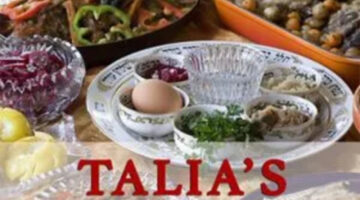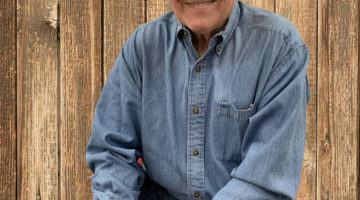Kosher Cow Scans
by Stuart Wine February 14, 2011 New York (JTA) — In a move that may mollify animal-rights activists, some kosher butchers and oversight organizations are set to use a new high-tech method to determine whether a cow is kosher before it is slaughtered. This innovative technology will eliminate the need to ritually slaughter animals that would later be declared non-kosher under exacting Orthodox requirements. Rabbi Heshy Malchowitz of the Orthodox Union, the largest and most prominent Orthodox Jewish oversight agency, has teamed with a leading veterinary scientist to implement imaging of live cows. They call the technology “COW Scans.”
New York (JTA) — In a move that may mollify animal-rights activists, some kosher butchers and oversight organizations are set to use a new high-tech method to determine whether a cow is kosher before it is slaughtered. This innovative technology will eliminate the need to ritually slaughter animals that would later be declared non-kosher under exacting Orthodox requirements. Rabbi Heshy Malchowitz of the Orthodox Union, the largest and most prominent Orthodox Jewish oversight agency, has teamed with a leading veterinary scientist to implement imaging of live cows. They call the technology “COW Scans.”
One of the primary tasks following ritual slaughter is to manually inspect the lungs and other organs (“bedika”) for blemishes and adhesions that can render meat non-kosher. Depending on whether and what type of adhesions are present, the animal’s meat can be glatt kosher, kosher, or not kosher at all. Because many orthodox communities eat only glatt kosher meat while an increasingly large number of non-kosher consumers refuse to purchase ritually slaughtered meat, much of the non-glatt and non-kosher meat is disposed of. Rabbi Malchowitz has been thinking for some time about ways to eliminate this wastefulness. After undergoing a CT scan for a tumor that turned out to be benign, it occurred to Rabbi Malchowitz that such noninvasive medical imaging could be the solution he was looking for. He approached professor Amanda Youngsmith of the veterinary sciences school at the University of Kentucky to inquire about such a use. Professor Youngsmith, an expert in bovine radiology, was glad to help.
“Although not a member of the Jewish community, I was very excited to potentially apply my expertise to issues facing the Jews. I grew up near religious Jews and have only the fondest memories from my childhood of white bearded rabbis in long black frocks. We always thought that the rabbis were trying to do good. Plus, as an animal lover I identified with the Rabbi's interest in reducing wasteful slaughter.” Youngsmith immediately saw the potential of CT scanners to revolutionize kosher animal slaughter. Thus began a long process of collaboration by the odd couple. After nearly two years of experimentation, which led to the publication of several scholarly articles in radiological and veterinary journals, Professor Youngsmith and her team of research assistants were finally able to calibrate the CT scanners to Rabbi Malchowitz's exacting religious standards.
Before bringing the technology to market, Rabbi Malchowitz became concerned that there may be confusion as to what type of animal was being provided kosher certification. “Use of the familiar term ‘CAT Scan’ may have caused the mis-impression that we are providing kashrus certification to cats. This could not be further from the truth. So we called it a 'COW Scan.' Cows are kosher. And delicious.”
Interestingly, kosher cow brains played an important role in the development of CT back in the 1960s. That CT will now play an important role in the hashgacha process provides a fitting coda.
The new COW Scan product will be ready for commercial use in short order. Malchowitz and Youngsmith will soon complete a clinical trial designed to prove that COW Scans can eliminate unnecessary animal slaughter. Malchowitz explained that “two-hundred cows have been enrolled in the trial. Veterinary radiologists will evaluate scans of the live cows, which will then undergo ritual slaughter followed by bedika. The results will then be analyzed to determine the sensitivity and specificity of COW Scans in predicting whether an animal has blemishes that would render it non-glatt or non-kosher. Additionally, we are currently in the process of obtaining haskamos [recommendations for the product] from several Gedolim [leading Rabbinic figures] for this revolutionary technology.” When pressed to identify the leading rabbinic figures, Rabbi Malchowitz indicated that he is maintaining confidentiality until the documents have been signed.
“Additionally,” Rabbi Malchowitz continued, “I want to be absolutely clear that we have no desire to limit the use of ritual slaughter. On the contrary, as Torah-true Jews, we believe that the methods mandated by G-d and by the Rabbis are humane and require no justification or mitigation. However, I believe that anyone would agree that there is no point in shechting an animal that will not be kosher anyway.”
Reaction to the innovative use of the technology among Orthodox Jews has been generally positive. Moshe Erdwald, a student at Yeshivas Toras Emes, volunteered that, “This is what modern orthodoxy really should be. While I don't consider myself a member of that camp, it really should be the application of modern technology to halacha [Jewish Law]. Like my rebbi [teacher], who used to make sure to give matanos la'evyonim [gifts to the poor] on Purim to oniyim [poor people] in Israel by electronically transferring money from his bank account to an account in Israel. What could be more modern and more Orthodox than that?”
Rabbi Mark Hersh, of the Institute for Modernity and Jewish Law, objected to Erdwald's characterization of modern orthodoxy, but agreed that COW Scan technology “represents a significant advance in our ability to meet the needs of socially conscious Kosher consumers. Sparing animals the need to undergo ritual slaughter if they aren't going to be kosher anyway reflects how we can use modern tools to deal with complex ethical issues.”
Abe Zelman, of the Jewish Coalition for the Ethical Treatment of Animals, agreed with the assessment. “Personally, I don't think that any animal should be subjected to primitive methods of ritual slaughter, or, in fact, slaughtered for food at all. But if we can cut down on the number that have to suffer, that's a good thing. I do, however, have reservations about their use of CAT scans for this. Don’t these scans use radiation and cause cancer? They should use MRI technology instead.”
Rabbi Malchowitz explained that he and Professor Youngsmith considered the use of MRI but quickly concluded that it would not be feasible. “First–and I'm just relating what the science people explained to me–the cost of making an MRI scanner with a bore large enough for the torso of a cow is extremely high. Do you think that MRI machines are uncomfortably narrow for no good reason? Additionally, MRI isn't good for looking at the lungs. Apparently something about air and lung tissue making bad MRI images.”
Not all responses have been supportive, however. Rabbi Chaim Lotsky of Kehillas Beis Yehudah in Monsey, NY objected to the entire enterprise. “The OU’s denials notwithstanding, this endeavor lends legitimacy to claims that shchita is inhumane. Halacha is inherently good; we do not need to be apologetic. And cows that fail the COW Scans will presumably undergo slaughter by some other means. While the granola folks may prefer such alternative methods, we should have no part in subjecting animals to a procedure that we ma’aminim [true believers] know to be more painful.”
Others objected on monetary grounds. Jacob Robertson of Twin City Poultry, a large Midwestern distributor of kosher food, noted that, “even the OU acknowledges that the costs of the scanning equipment, anesthesia, and training and paying mashgichim [overseers] to review the scans will be high. Even if costs decline with increasing volume, we are talking about a significant expense. The kosher consumer is already suffering from high prices, and we would have to pass on these additional costs to the consumer.” Art Himmelfarb, a regular shopper at Glatt Express in Teaneck, agreed. “This will only add to the cost of kosher beef, which is already too expensive. That's why my family eats chicken. I hope they don’t start scanning chickens.”
Asked whether COW Scans could one day eliminate the need for bedika altogether, Rabbi Malchowitz was quick to squelch the idea. “Chalila [Heaven forbid!] for us to eliminate the procedures established by the Torah and the mesorah [religious tradition]. Even if the imaging results were 100% trustworthy, I would never undermine such an important mitzva.”
Assuming that the clinical trial is successful–a result of which Rabbi Malchowitz is confident–the rabbi indicated that we can expect to see “COW-Scanned” labelled kosher meat in the next six months. We will be on the lookout for this exciting new product.









